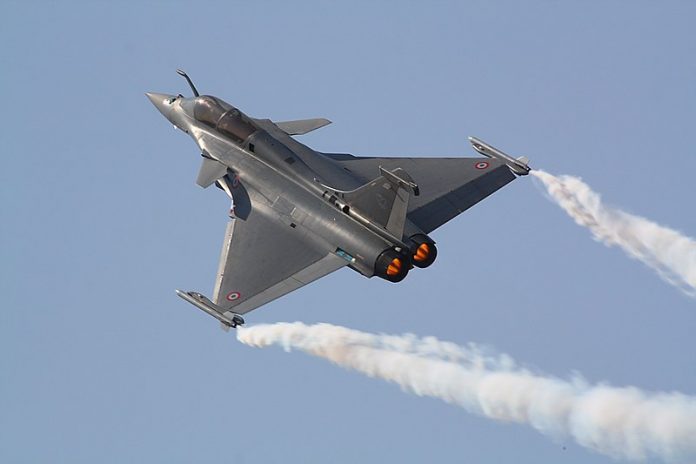There is no doubt about the fact that the Republic of India remains, by far, the South Asian and central Indian Ocean Region’s principal hegemon. Despite a contraction in GDP owing to the unfortunate incurrence of the novel Coronavirus pandemic in early 2020, or the COVID19, India remains on track to achieve gargantuan growth with a forecast of nominal GDP rising by as much as 22% or more in FY 2022. The assertions of all forms of power, soft and hard, in South Asia by India considerably overwhelms all of its small-sized neighbours, despite Prime Minister Narendra Modi’s ‘Neighbourhood First’ policy that – in 2014 – offered improved stakes to India’s neighbours (including the perennial killjoy and the permanent antagonist – the Islamic Republic of Pakistan) in the overall development and prosperity of South Asia as a sub-region of the Asian continent.
The ‘Neighbourhood First’ maxim portrays the impression that India may be a hegemon that – as per the realist school of international relations – is continually seeking to expand its power and influence on the world stage as a unitary player. It is also willing to delve into the softer sides of what constitute the gamut of economics in international relations i. e. liberal internationalism, free market economies with generous trade regimes and parameters for the conduct of free trade, sustained economic cooperation, industrious collaboration leading to productive indigenisation, and a peaceful rise. With a greater role on offer in South Asia for the bite-sized economies of the Indian peninsula, India seeks to portray a regionalist behaviour as regards the diversity of South Asia’s nation-states.
India and Pakistan-occupied Kashmir Since 1947
The heady days of 1947, when Pakistani tribal marauders ventured into and occupied one-third of Indian territory despite the ruling Maharaja Hari Singh of the princely state of Jammu and Kashmir having formally acceded to India, seem an eternity apart from the contemporary era. India’s reluctant use of force and a fallback to the oft-mentioned (and unofficial) doctrine of ‘strategic restraint’ have been a staple in the Kashmir quagmire. The tribal invaders were actively supported by a then-nascent Pakistani military and intelligence combine. As on date, India is in control of approximately 48% of Jammu and Kashmir.
Strategic restraint imposes upon India a Japan-esque disinclination to utilise the facets of force for the settlement of wide-ranging bilateral and multilateral disputes. Given that India is no pacifist power despite a stated commitment to peace in the region and globally, the use of force is all but an imbibed norm in Indian strategic culture. Hence, Indian activities and military involvement in Kashmir must envision the accomplishment of the Kashmir end-goal – that of regaining the territory in its entirety.
It has been asserted that, in the past, India has come to the very cusp of regaining occupied Kashmir, which comprises two major territories – Gilgit-Baltistan and Azad Kashmir – and a set of other smaller territories which have been gifted by Pakistan to China. Following the culmination of wars fought between India and Pakistan, India contemplated absorbing occupied Kashmir with the mainland but reverted back owing to a falsified culture of strategic tolerance within the Indian political establishment.
In the 1947 kerfuffle between India and Pakistan, the Indian Army was determined to move beyond western areas in Jammu and Kashmir, which lie at the present-day Line of Control with Azad Kashmir. The eviction of tribal elements from Pakistan was also to be followed up by the occupation of invaded territory. Following the 1971 war between India and Pakistan, which resulted in the separation of East Pakistan (now Bangladesh) from the Islamic Republic, India explored the possibility of the re-inclusion of PoK into India with the Pakistanis having been forced into a surrender following a defeat in the western frontier. It was suggested at the time that the reintegration of PoK with India, following a humiliating defeat for Pakistan in 1971 should have been a “historic step” in post-independent India’s history.
Following the Kargil debacle of 1999, India once again pondered the possibility of using the defeat of Pakistan as a reason for salvaging PoK. However, India’s inclinations to the non-use of military power beyond its established territory of 3.28 million sq. km. has held back the endeavours of a capable Indian military. Several Indian military-strategic policies such as No First Use (of nuclear weapons against a non-nuclear or a nuclear weapons state) are supportive of a passive Indian military policy that continues to hold back Indian potential and prowess in the domain of offensive military actions.
India’s military officials continue to espouse an encouraging inclination to regain PoK but then shudder from active action resulting in unfulfilled objectives. Statements are routinely issued by Indian military chiefs that actively propagate the will and desire of the Indian Army to undertake active missions that may result in the eventual and much-sought integration of PoK into India. For the most part, India restricts itself to heated responses to routine ceasefire violations by Pakistan of the Line of Control in the disputed territory.
The Modi government’s surgical strikes and cross-border raids, a defining hard power characteristic of the Indian Prime Minister’s first term at the helm of one of the world’s most important rising powers, have typified a new India that ventures across borders to either avenge attacks inflicted upon its army men and innocent civilians or to actively attack and disrupt terrorist machinery, which is indicative of a desire to seize the initiative in the PoK endgame. The Indian External Affairs Minister, S Jaishankar, has also reiterated the Indian government’s longstanding stance on the eventual integration of PoK with India, as have several other government officials. The President of the BJP’s, Modi’s ruling political party that is part of an alliance, Uttar Pradesh unit, Swatantra Dev Singh, has even suggested that India has fixed the dates to commence and wage war with Pakistan and China. One could safely assume that the war with Pakistan will be fought with an intention to regain PoK.
The POK endgame
As things stand, conventional sparring initiated by India and aimed squarely at the collusive dark web of the state of Pakistan, the Pakistan Army, the Pakistani deep state, the deep-rooted terror machinery, the Communist regime governing the Peoples’ Republic of China and the transgressions of the Peoples’ Liberation Army may appear to be a handful. India’s defeat at the hands of China in 1962 indicated an urgent need to give a fillip to India’s security mechanisms and devise plans catering to offensive aims and objectives in territories attuned to ill behaviour from external proponents with disguised agendas.
To finally regain PoK following an inexplicable inertia within the Indian military establishment given the dexterity, attitude, and proven prowess of the Indian armed forces as a whole, India will have to initiate operations and missions descript of clandestine and overt military action leading to a conclusive victory. The trepidations of over 70 years will finally be put to rest with upscaled Indian military activity in occupied Kashmir leading to the eventual re-absorption of ‘erstwhile’ Indian territory into the union of India. The 1994 Parliamentary resolution on the integration of Kashmir with India will have finally achieved its goal.
Given that a substantial portion of the China-Pakistan Economic Corridor (CPEC) passes through occupied Kashmir, India will have to scale up its military to achieve credible gains in a potential two-front war that may even extend to the maritime domain in the wake of Indian overtures. India is in dire need of a doctrine akin to Cold Start in a non-retaliatory demeanour i. e. without having absorbed terrorist attacks prior to launching an attack. This will result in the enemy being surprised by India’s newfound willingness to regain territory (and the institutionalisation of this endeavour as a norm in evolving Indian strategic thinking) and indicate that the issue hasn’t been put bed because of a prolonged impasse triggered by Pakistan’s supposedly superior nuclear strengths or the ceaseless Chinese backing of its ally, partner, and friend.
Bombing CPEC projects, estimated to be worth US$ 64 billion, that continue to face ire in Kashmir through sustained air campaigns (comprising planned air raids, calculated deployments across the border for missions, and an adherence to a no-loss strategy akin to the post-Uri retribution of 2016) amidst sounding heated warnings to China and its ‘all-weather’ friend Pakistan through diplomatic channels will be helpful. Inflicting military, material, and financial agony on the China-Pak combine will be a statement of India’s intent and prowess in its northern areas.
Alternately, India must moot the probability of a win-win referendum leading to PoK residents voting to join the Indian Union on the basis of an assessment of the prevalent anti-Pakistan and rising pro-India sentiments in PoK. Several news media have reported that the sheer intensity of misconduct and the ferocity of unspeakable and unfathomable evil being unleashed by Pakistan against innocent civilians in PoK has already tilted the stakes of Kashmir’s accession irrefutably in India’s favour. It is even believed that PoK is entirely controlled by terrorist machineries working 24×7 on their anti-India agendas (and with the presence of the Taliban overseeing terror activities) with the Pakistani deep state’s watchful eye casting an influential shadow over the still disputed region. In this scenario, a referendum will surely result in a decisive Indian victory.
In summary, regaining PoK remains an out-and-out uncompromising objective that India must achieve in the upcoming few months and years, either through hard or soft forays. The reintegration of a long-lost and legitimate territory of the Republic of India will be a critical first step on the road to India’s rise as a global superpower by 2050.
The views and opinions expressed in this article are those of the author and do not reflect the views of his employers or The Geopolitics.

The writer is a former Research Associate who has notably associated with the National Maritime Foundation (NMF) in New Delhi, India. He has over five years of work experience in international relations research and writes extensively on issues pertaining to the maritime domains of Japan, the Republic of Korea, and the ASEAN. The views expressed above are in a personal capacity, and do not reflect the views of the NMF. The writer can be contacted via email at [email protected].


